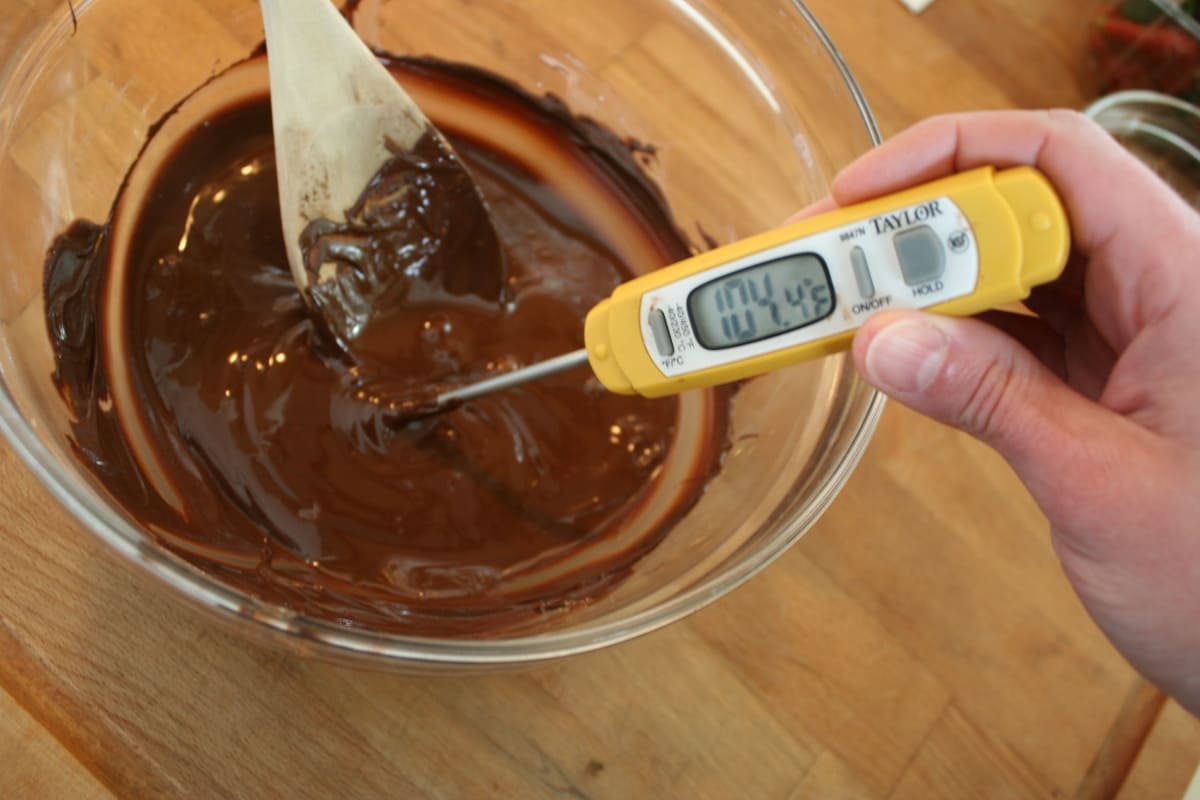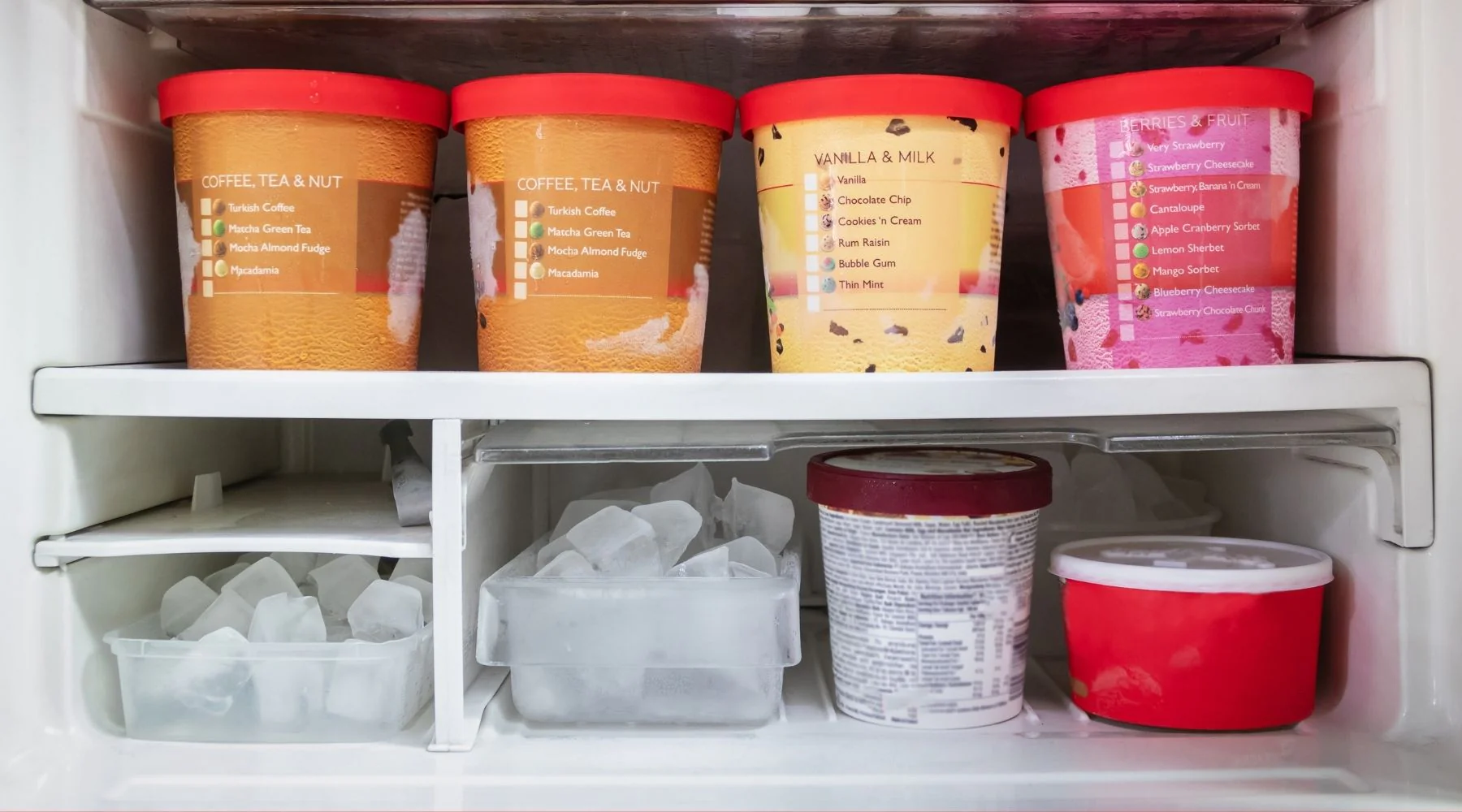Home>Home, Lifestyle & DIY>Optimal Refrigerator Temperature: How To Keep Your Food Fresh And Safe


Home, Lifestyle & DIY
Optimal Refrigerator Temperature: How To Keep Your Food Fresh And Safe
Published: February 22, 2024
Maintain optimal refrigerator temperature for food safety and freshness. Learn how to keep your food fresh and safe at home with these DIY tips.
(Many of the links in this article redirect to a specific reviewed product. Your purchase of these products through affiliate links helps to generate commission for Temperatures.com, at no extra cost. Learn more)
Table of Contents
Importance of Refrigerator Temperature
Maintaining the correct temperature in your refrigerator is crucial for preserving the freshness and safety of your food. The refrigerator serves as a vital tool in preventing the growth of bacteria and mold, which can lead to food spoilage and potential health risks. By understanding the importance of refrigerator temperature, you can ensure that your food remains fresh and safe for consumption.
When the refrigerator is set to the appropriate temperature, it creates an environment that slows down the growth of bacteria, ensuring that perishable items such as dairy products, meats, and leftovers stay fresh for a longer period. Additionally, maintaining the optimal temperature helps to preserve the nutritional value and flavor of the stored food, contributing to a healthier and more enjoyable dining experience.
Inadequate refrigeration temperature can lead to accelerated bacterial growth, potentially resulting in foodborne illnesses. By adhering to the recommended temperature settings, you can significantly reduce the risk of food contamination and safeguard the well-being of yourself and your family.
Furthermore, maintaining the proper refrigerator temperature is essential for minimizing food waste. When food is stored at the correct temperature, it stays fresh for a longer duration, reducing the likelihood of premature spoilage and the need for frequent disposal. This not only promotes sustainability but also helps to save money by maximizing the utility of the groceries you purchase.
In essence, the importance of refrigerator temperature cannot be overstated. By ensuring that your refrigerator is set to the appropriate temperature, you can prolong the shelf life of your food, mitigate health risks, and contribute to a more sustainable and cost-effective approach to food storage.
Recommended Temperature Settings
Maintaining the recommended temperature settings in your refrigerator is paramount to preserving the freshness and safety of your perishable items. The ideal refrigerator temperature range for safe food storage is between 35°F and 38°F (1.6°C to 3.3°C). This temperature range is optimal for slowing down the growth of bacteria, thereby extending the shelf life of your food.
At temperatures below 35°F (1.6°C), the risk of freezing certain food items, particularly fruits and vegetables, increases. On the other hand, temperatures above 38°F (3.3°C) can expedite bacterial growth, potentially leading to food spoilage and safety concerns.
To ensure that your refrigerator maintains the recommended temperature settings, it's essential to use a reliable thermometer. Place the thermometer in the warmest area of the refrigerator, typically on the door or near the top shelf, as these areas are more susceptible to temperature fluctuations. By regularly monitoring the temperature, you can make necessary adjustments to the settings to guarantee that your food remains at the optimal storage temperature.
Moreover, it's important to note that the freezer compartment should be set to 0°F (-18°C) or lower to effectively preserve frozen foods. Freezing food at this temperature halts the growth of microorganisms, maintaining the quality and safety of frozen items.
By adhering to these recommended temperature settings, you can create an environment within your refrigerator that maximizes food preservation and minimizes the risk of foodborne illnesses. Additionally, maintaining the appropriate temperature settings contributes to energy efficiency, as the refrigerator operates more effectively when set to the recommended temperature range.
In essence, by setting and maintaining the refrigerator and freezer compartments at the recommended temperatures, you can ensure the longevity and safety of your food, promoting a healthier and more sustainable approach to food storage.
Monitoring and Adjusting Temperature
Monitoring and adjusting the temperature of your refrigerator is a fundamental aspect of ensuring the freshness and safety of your stored food items. Regular monitoring is essential to verify that the refrigerator is consistently maintaining the recommended temperature range of 35°F to 38°F (1.6°C to 3.3°C). To effectively monitor the temperature, it is advisable to use a reliable refrigerator thermometer. Place the thermometer in the warmest area of the refrigerator, such as the door or near the top shelf, as these areas are more susceptible to temperature fluctuations. By doing so, you can obtain an accurate representation of the internal temperature and make informed decisions regarding potential adjustments.
When monitoring the temperature, it is important to take note of any fluctuations or deviations from the recommended range. Fluctuating temperatures can impact the shelf life and safety of your food, making it crucial to address any inconsistencies promptly. If the thermometer indicates that the temperature is consistently above or below the recommended range, it may be necessary to adjust the refrigerator settings accordingly. Most modern refrigerators are equipped with a temperature control dial, allowing you to raise or lower the internal temperature as needed. By making incremental adjustments and allowing sufficient time for the temperature to stabilize, you can effectively fine-tune the settings to align with the recommended range.
In addition to using a thermometer, some advanced refrigerators feature digital temperature displays, providing real-time visibility of the internal temperature. These displays offer convenience and precision, allowing you to monitor the temperature without the need for a separate thermometer. If your refrigerator is equipped with this feature, take advantage of it to stay vigilant about the temperature status and make adjustments as necessary.
Furthermore, it is advisable to periodically clean the refrigerator's condenser coils to ensure optimal performance. Dust and debris accumulation on the coils can hinder the refrigerator's ability to maintain the desired temperature, potentially leading to fluctuations. By incorporating this maintenance task into your routine, you can contribute to the overall efficiency of the refrigerator and support consistent temperature regulation.
By actively monitoring and adjusting the refrigerator temperature, you can uphold the integrity of your stored food, minimize the risk of spoilage, and promote a safe and sustainable approach to food storage. This proactive approach empowers you to maintain an optimal environment within the refrigerator, ultimately enhancing the longevity and quality of your perishable items.
Impact of Temperature on Food Safety
The impact of temperature on food safety is profound, directly influencing the preservation and quality of perishable items stored in the refrigerator. When the refrigerator temperature deviates from the recommended range of 35°F to 38°F (1.6°C to 3.3°C), it can significantly compromise the safety and integrity of the stored food.
Inadequate refrigeration temperature, particularly temperatures above 40°F (4.4°C), creates an environment conducive to bacterial proliferation. Bacteria such as Salmonella, E. coli, and Listeria monocytogenes thrive in warmer conditions, posing a substantial risk to food safety. These pathogens can multiply rapidly, increasing the likelihood of foodborne illnesses when contaminated food is consumed. Furthermore, fluctuating temperatures within the refrigerator can lead to condensation, providing additional moisture that fosters bacterial growth on food surfaces.
Conversely, excessively low temperatures, below 32°F (0°C), can result in the freezing of certain food items, leading to texture degradation and potential loss of nutritional value. While freezing inhibits bacterial growth, it can adversely impact the sensory attributes and overall quality of the food.
Maintaining the recommended refrigerator temperature range is essential for inhibiting bacterial growth and preserving the safety of perishable items. By adhering to these temperature guidelines, you create an environment that slows down the proliferation of harmful bacteria, reducing the risk of foodborne illnesses and ensuring the safety of the food consumed by you and your family.
Moreover, the impact of temperature on food safety extends beyond bacterial growth to encompass the overall quality and shelf life of the stored food. When exposed to suboptimal temperatures, perishable items such as dairy products, meats, and leftovers are susceptible to accelerated spoilage, resulting in a shorter shelf life and potential waste. By maintaining the appropriate temperature, you can extend the freshness and longevity of your food, minimizing the need for premature disposal and contributing to a more sustainable approach to food storage.
In essence, the impact of temperature on food safety is multifaceted, encompassing both the prevention of bacterial contamination and the preservation of food quality. By prioritizing the maintenance of the recommended refrigerator temperature range, you can safeguard the safety and integrity of your stored food, promoting a healthier and more sustainable approach to food storage.
Tips for Keeping Food Fresh in the Refrigerator
-
Organize and Rotate: Arrange your refrigerator strategically, placing perishable items such as dairy, meats, and leftovers on the shelves where the temperature is the coldest. Additionally, practice the "first in, first out" approach by placing newly purchased or prepared items behind existing ones. This ensures that older items are used before their expiration dates, minimizing food waste.
-
Proper Storage Containers: Utilize airtight containers or resealable bags to store fruits, vegetables, and other perishable items. These containers help maintain the freshness of the food while preventing the transfer of odors and flavors between different items. For leafy greens and herbs, consider wrapping them in paper towels before storing to absorb excess moisture and prolong their crispness.
-
Temperature-Sensitive Placement: Be mindful of where you store certain items within the refrigerator. For instance, dairy products and eggs should be stored on the shelves rather than the door, as the temperature on the door fluctuates more due to frequent opening and closing. Raw meat and seafood should be placed on the bottom shelf to prevent cross-contamination with other foods.
-
Regular Cleaning: Routinely clean the refrigerator to remove spills, crumbs, and expired items. This practice not only promotes a hygienic environment but also prevents the growth of mold and bacteria. Pay attention to the refrigerator's drawers and compartments, ensuring that they are free from any residue that could compromise the freshness of the stored food.
-
Optimal Humidity Levels: Many refrigerators feature humidity-controlled drawers, designed to preserve the freshness of fruits and vegetables. Store produce that requires high humidity, such as leafy greens and berries, in these drawers to extend their shelf life. Conversely, items that are sensitive to moisture, such as mushrooms, should be stored in a dry, ventilated area of the refrigerator.
-
Avoid Overcrowding: While it may be tempting to pack the refrigerator to its full capacity, overcrowding can impede air circulation, leading to uneven cooling and potential food spoilage. Allow for adequate space between items to facilitate proper airflow, ensuring that the refrigerator maintains a consistent temperature throughout.
By implementing these tips, you can optimize the storage conditions within your refrigerator, prolonging the freshness and safety of your food while minimizing waste. This proactive approach not only contributes to a more sustainable and cost-effective food storage practice but also enhances the overall dining experience by ensuring that your meals are prepared with the freshest ingredients.















